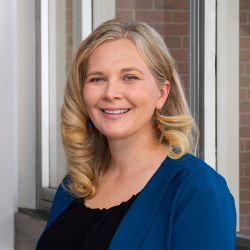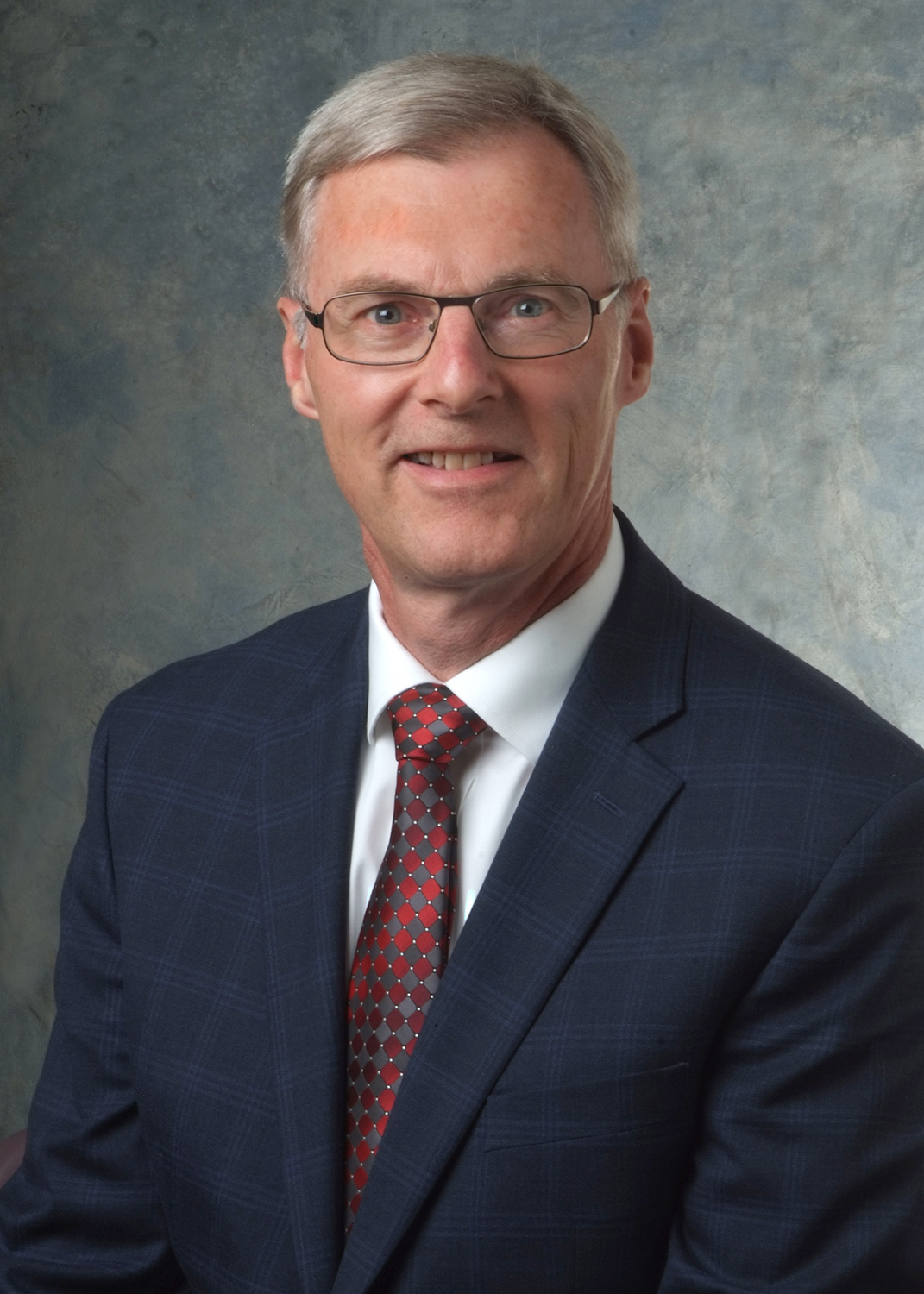Materials artwork to be displayed in White Building after renovation

When the renovated White Building opens in 2021, there will be materials-themed artwork on display created by department faculty, staff and graduate students.
The Graduate Materials Society discussed holding an artistic social event during the Fall 2020 semester. When the idea was brought to department chair Frank Ernst, he suggested that students create art related to their research or using materials they work with. GMS then decided to make the event a contest to increase participation and collaboration, opening it to faculty and staff as well.
PhD candidate Nishan Senanayake was the grand prize winner. Senanayake’s piece, “Fatigue at Case,” was created using neural style transfer, an optimization technique that takes three images, a content image, a style reference image, and an input image to style, blending them together so the input image looks the content image has been “painted” in the style of the style image. Senanayake used a picture of the CWRU landscape as the content image and a scanning electron microscopy image of fatigue lines as the style image. Senanayake used resources from CWRU’s High-Performance Computing Cluster to create his artwork. His work also relates to his research on developing a physical understanding of processing-structure-property using the Data science approaches in the Mesoscience Lab.
The runner-up was “Super Mario the Materials Scientist,” a collaborative project created by PhD candidate Elahe Farghadany and senior research associate Hoda Amani Hamedani. The STEM/HAADF image of NdLiTiO3 oxide epitaxial thin-film on SrTiO3 substrate shows crystallographic defects, including twins and vacancies, Ruddlesden Popper structure and APB anti-phase boundaries.
Third place went to postdoc scholar Andy Paul Chen. Chen, who has been painting since he was ten years old, created his piece “Mr. Magpie and the Corundum Conundrum” using acrylic painting on canvas. Chen was inspired to create a painting based on the corundum conundrum, an unsolved problem involving crystalline aluminum oxide behavior in the presence of trace atomic impurities. He used a string of beads with sapphire gemstone to demonstrate an asterism, an optical feature caused by inclusions of rutile (titanium dioxide) in corundum. The magpie, a lover of shiny objects, has stolen Chen’s house key, office key and lunch money. The alternative title, Kan-yü, or Corundum, is at the bottom of the painting, using the writing system from Iron-Age China (circa 10th-3rd centuries BC), following Chen’s habit of including his titles on his paintings.
Other submissions included:
-
“Solar,” by Research Associate Professor Laura Bruckman. Bruckman used cotton fabric and cotton fibers with cross stitching. She was inspired to create a piece related to her work on the reliability and degradation of solar modules and her project doing field surveys of solar modules in SDLE.
-
“Recharging Humanoid Robot,” by PhD candidate Sameera Nalin Venkat. “What I tried to do in this artwork was to depict a humanoid robot that is recharging itself with the help of an embedded solar panel on a sunny day,” said Venkat. She stuck broken silicon solar cells to the canvas board using super glue and used the materials used for making robots (steel, aluminum, and biodegradable polymers) to make the robot’s body. “The idea behind this solar panel to show a number of tiny flexible cells that can rearrange in a particular orientation to absorb sunlight,” said Venkat. The cells appear to be mixed up for compactness, but they wouldn’t break in the process of folding and unfolding the panel from the robot’s head. Venkat also included zentangle patterns in a colored background to show that “the robot is experiencing a zen moment while recharging. The abstract meaning of this piece is that, as human beings, we would also have to take some time for ourselves to recharge and experience calmness.”
-
“SDLE Center,” also by Venkat. Venkat, who is active in the SDLE Center, created this piece featuring the center’s different research aspects. She used paint markers to create this freehand piece with no predefined outlines.
-
“Killer Inclusion,” by research associate Janet Gbur. “The BSE SEM image represents a 0.135 mm diameter superelastic Nitinol wire fatigue failure due to a large nonmetallic inclusion just below the wire surface, false-colored and pictured in bright blue. This ‘Killer Inclusion’ was part of a wire chemistry that produced higher concentrations of larger nonmetallic inclusions and ultimately shorter fatigue lives.” Gbur, who minored in art as an undergraduate, was inspired by her dissertation work to create this piece.
-
“The Haunting,” also by Gbur. Inspired by Andy Warhol’s work, created this array featuring SE SEM fractography of a Nitonol dental arch wire following fully-reversed, flex bending fatigue. The Haunting figure was observed in the original fracture surface, reminding a viewer of the fragility of devices undergoing fatigue.
-
“A Perspective on Thin Films,” by PhD candidate Kimberly Gliebe. In everyday life, people are surrounded by films, “but most of us do not know what they are or have an appreciation for them,” said Gliebe. She used two atomic force microscopy images for the background, showing the nanometer scale surface of two films. Gold that was scraped off of the inside of a deposition chamber that makes films is in the upper left corner, and it is surrounded by resistors, made of layers of thin films on silicon. Two fully packaged devices are on the right. Gliebe used AFM and was assisted by Professor Steven Eppell in the biomedical engineering department. Some of the devices were made during ECHE 483, in the chemical engineering department.
-
“Elusive Patterns,” also by Gliebe. Gliebe was inspired to create this piece after Professor Alp Sehirlioglu told her that one of her patterns looked like the Cheshire Cat. The cat’s face in her artwork comes from a video of a changing diffraction pattern undergoing a machine learning technique called principal component analysis, providing pictures from the video with the most variance. Gliebe used strontium ruthenate and only changed the coloring and outline of the pattern.
-
“The Wolf on the Surface,” by PhD candidates Nishan Senanayake, Nathaniel Tomczak, and Laura Wilson. This compilation of a surface roughness profile from an additively manufactured high-temperature metal was inspired by Andy Warhol’s Marilyn Monroe portfolio. This material comes from Wilson’s research project on the additive manufacturing of oxide dispersion strengthened NiCoCr. “Much like Warhol embraced the use of machines to produce his brightly colored silkscreen pieces, additive manufacturing and analytical machines can produce artistic samples that can be interpreted with bright colors, said Wilson. The surface roughness profile was collected on the Nanovea Optical Profilometer in the MORE Center.
A kickoff social zoom event was held on Oct. 6. Contestants were given until Nov. 13 to submit their up to two pieces of work and had the option to work individually or as a group. The weekend after the submission deadline, winners were chosen by CSE Dean Venkataraman Balakrishnan, Mechanical & Aerospace Engineering Professor Clare Rimnac, Macromolecular Science & Engineering Professor David Schiraldi and a graduate student from the art department, Annapoorna. Ernst served as a tiebreaker vote. Winners received Amazon gift cards.


